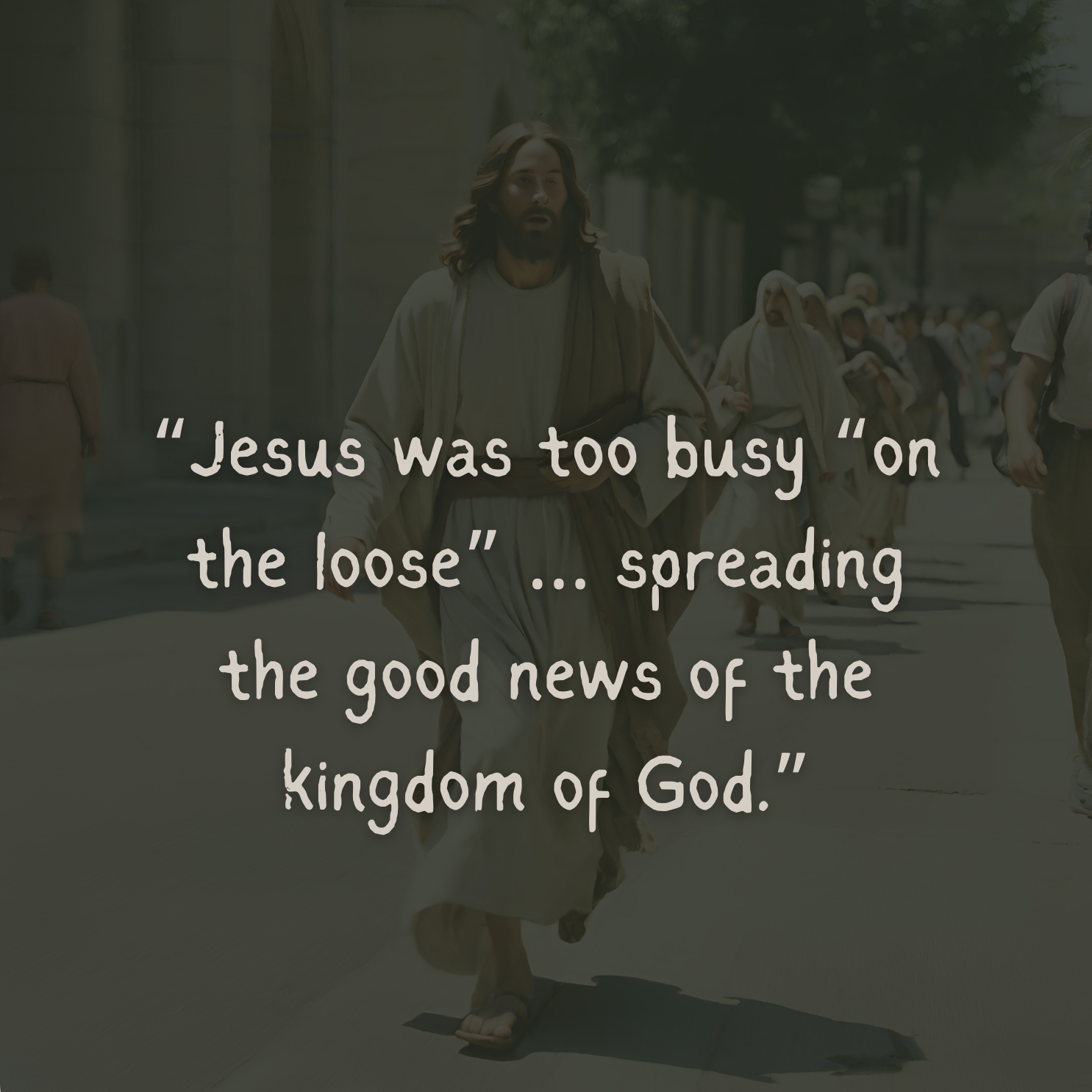Third Sunday After Epiphany
The Good News is the Real Celebrity
Mark 1:14-20
Third Sunday After Epiphany
Analysis by James Squire
14Now after John was arrested, Jesus came to Galilee, proclaiming the good news of God, 15and saying, “The time is fulfilled, and the kingdom of God has come near; repent, and believe in the good news.” 16As Jesus passed along the Sea of Galilee, he saw Simon and his brother Andrew casting a net into the sea—for they were fishermen. 17And Jesus said to them, “Follow me and I will make you fish for people.” 18And immediately they left their nets and followed him. 19As he went a little farther, he saw James son of Zebedee and his brother John, who were in their boat mending the nets. 20Immediately he called them; and they left their father Zebedee in the boat with the hired men, and followed him.
“Jesus was too busy “on the loose” … spreading the good news of the kingdom of God.”
Author’s note: As we know, Mark does not dilly-dally. He gets right down to it. John the Baptist is a memory (until it needs to be dredged up later). We saw it in the baptism text that precedes this one. What Matthew and Luke spend whole passages on, Mark knocks off in a verse or two. But my goodness. John was arrested! Isn’t that the way sometimes? You make straight the paths for someone who is to follow, and the chroniclers just use you as a prop? Wait until you see how the story uses the main character, though …
DIAGNOSIS: The Story Centers Jesus
Step 1-Initial Diagnosis (External Problem): Jesus hogs the spotlight
Jesus is baptized and emerges to a booming voice from heaven announcing his greatness. He becomes a steamrolling preacher standing on a street corner in the wilderness, declaring a critical moment in human history (kairos in Greek) when the divine is at the world’s doorstep. He presents this as good news that should be met with repentance and belief. There seems to be no room in his story for any other stars. He seems to hog center stage. Everyone – so far – follows him without question, like lemmings. They don’t really understand what he’s all about or they would run quickly in the opposite direction.
Well, we know better than to follow such a reckless fellow, anyway. There’s too much going on in this mess of a world to waste our time on some maniac preaching repentance and the kingdom of God. We’re having a devil of a time keeping this puny world in one piece. The last thing we need is another kingdom moving in and presuming to take over.
Step 2-Advanced Diagnosis (Internal Problem): We try to steal the spotlight
Now, if he was more of team builder than a prima donna hogging the spotlight, that would be a different story. We would be on board with that. But no. He gets the booming voice of approval from heaven. He gets to have his clothing shine brightly on the mountain (Mark 9). He gets to be the paranoid one (Mark 8). It’s all about him, him, him. What about us? Some of us are more patient than others, willing to go along for a while. Maybe at some point it will all make sense, who knows. Then again, some will follow simply because they are followers, hoping that proximity to Jesus will magically rub off on them and they too will begin to glow radiantly.
It does seem reasonable to expect that when God comes into our world, he should help us conquer it before he starts thrusting his world upon us. Dropping everything – in the middle of the workday, no less – to follow blindly? Anyone who does that is pathetic.
Step 3-Final Diagnosis (Eternal Problem): The spotlight is too much for us
Alas, he is not going to be reasonable about this. “Take up your cross and follow me” (Mark 8:34) is his hard and fast rule. “Those who want to save their life will lose it” (Mark 8:35). This is the Jesus, representative of the kingdom of God, who blows into our lives and our world like a hurricane, as if the eye of the storm is the only safe place to be. He is unstoppable, and he disrupts our plans for this world. With friends like this, who needs enemies?
PROGNOSIS: Jesus Centers the Good News
Step 4-Initial Prognosis (Eternal Solution): Jesus turns the spotlight into his ministry
We forget that Jesus was born into this mess of a world we are obsessed with fixing. He was parented by humans, one of whom had a decent carpentry business and may have even viewed this world as worth fixing. Jesus was baptized along with all the other sinners into a world that was already demanding repentance in some sectors. You might say that Jesus is the kingdom of God made manifest among us.
And do we really crave the spotlight when we see what center stage did to him? His paranoia (Mark 8) proved to be visionary, though in truth it was not paranoia. It was his mission and his ministry to this world to take up his cross for our sake. Because this world – as it is – is not fixable. This world resists fixing, especially by “outsiders.” This world will rise up in violence against people like Jesus, and in fact it did. It killed him. And then, there he was again, back out in the world with his new kingdom approach (Mark 16:6- 7). He did not even wait for them to greet him and congratulate him on his resurrection and his defeat of death. He was too busy “on the loose” (Fred Niedner) spreading the good news of the kingdom of God, healing people, and forgiving sins. It was never ultimately about him (though we couldn’t do it without him) – it was about us and the promise. It was about the good news for sinners who felt cut off from the kingdom. Jesus’ mission was to get them reconnected to the kingdom of God.
Step 5-Advanced Prognosis (Internal Solution): Jesus includes us in his spotlight ministry
And he invited his followers – both self-respecting and pathetic – to trust him, even with our own crosses, and join him “on the loose.” There is still a place in this walking, talking, acting kingdom of God for Simon, Andrew, James, John, and all the rest of us, no matter how dense or standoffish or pathetic we are. The good news is what it is all about, and after all, “good news” is not for the benefit of the disciples, it is for the benefit of our audience, the ones we tell it to. That is a whole new kind of team building.
Step 6-Final Prognosis (External Solution): We heal and invite the ignored to share the ministry
We have been hopelessly included in this reckless kingdom of God, and the natural thing to do is to get on with the recklessness for the benefit of others. As we well know, our world is full of innocent victims of state violence, geopolitical violence, political violence here at home, along with scarcity and greed which breed their own kinds of violence. Simon, Andrew, James, John, and the other disciples could whisper in our ears about all the stuff they saw as they tried their best to keep up with Jesus. They also saw the healing that was possible in this kingdom, though they did not begin to understand it until after his death and resurrection. They could tell us that fixing the world is not the ultimate priority because sooner or later it will fail miserably. They were not about to throw the world away, like one of the infamous cults of recent decades, but they learned to value the lives they could touch and heal with the good news over winning some political war. They were reoriented toward the ochlos (“nameless, forgotten crowds or multitudes,” as Ed Schroeder was fond of reminding us) and away from the power centers, and they would encourage us to allow ourselves to be reoriented (a kind of repentance, after all) in a similar fashion. Jesus may have the central role in the kingdom, but his actions create in us a new kind of living that we can thrive on, secure in the knowledge of our own redemption.



